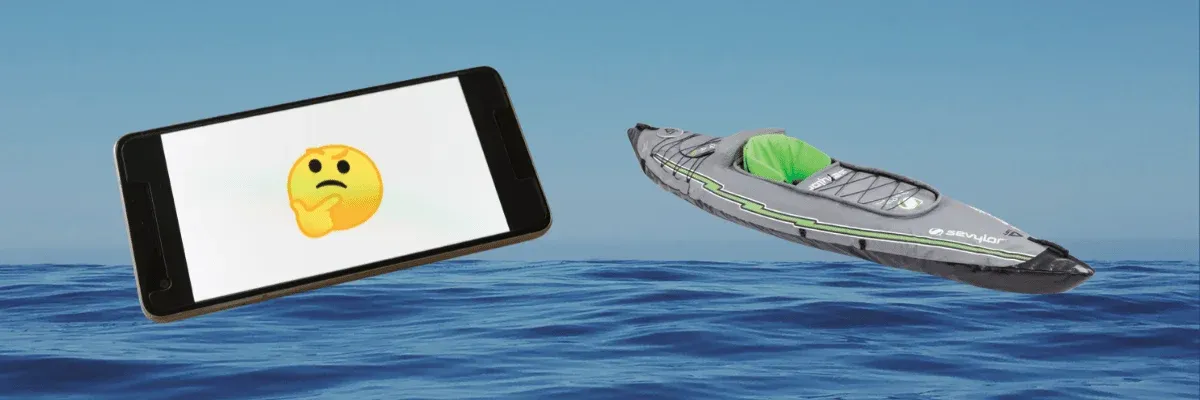Inflatable kayaks have surged in popularity among outdoor enthusiasts, offering a convenient and portable alternative to traditional hard shell kayaks. But one question often arises: how long do inflatable kayaks last? This article will delve into the factors that influence the lifespan of an inflatable kayak and provide insights to help you get the most out of your investment.
Key Takeaways:
- The lifespan of an inflatable kayak depends on the quality of materials, frequency of use, and maintenance.
- Most high-quality inflatable kayaks can last between 5 to 10 years with proper care.
- Regular inspection and proper storage are key to extending the life of an inflatable kayak.

Understanding the Durability of Inflatable Kayaks
Inflatable kayaks are made from durable materials like PVC, Nitrylon, or Hypalon, which are designed to withstand punctures and abrasions. Modern inflatable kayaks often feature multiple layers of material and a protective coating to enhance durability. The best inflatable kayaks are incredibly buoyant and can rival the sturdiness of hardshell kayaks.
The Role of Material Quality
The longevity of an inflatable kayak is heavily influenced by the quality of materials used in its construction. High-quality materials like Hypalon are known for their UV resistance and ability to handle extreme conditions, which can significantly extend the life of the kayak. On the other hand, lower-quality PVC may be more susceptible to damage from direct sunlight and harsh chemicals.
Frequency of Use and Care
How often you use your inflatable kayak and how well you take care of it will also determine its lifespan. Regular use can lead to wear and tear, but with proper care, such as cleaning with appropriate solutions and avoiding tree branches or sharp objects, your kayak can last much longer. Always rinse your kayak with fresh water after use, especially if paddling in saltwater.

Storage and Transportation
Proper storage is crucial for preserving the condition of your inflatable kayak. Store it in a cool, dry place away from direct sunlight to prevent material degradation. When transporting, avoid strapping it too tightly to roof racks, which can cause unnecessary stress on the material. Ensure there's enough space for the kayak to avoid creasing or bending.
The Importance of Maintenance
Regular maintenance, including checking for air leaks and patching any punctures promptly with a repair kit, is essential. Inflatable kayaks with multiple air chambers have an advantage, as they can stay afloat even if one chamber is compromised. Always carry a patch kit on your kayaking trips to address any issues immediately.
Inflatable vs. Hardshell Kayaks
While hardshell kayaks are known for their durability, modern inflatable kayaks are not far behind. The best inflatable kayaks are designed to be just as tough, if not tougher, than some hardshell kayaks. They are less likely to crack or break upon impact and can be easily repaired if they do puncture.
The Impact of Kayaking Environment
The environment in which you use your inflatable kayak can affect its lifespan. Paddling in calm water or slow-moving rivers is less demanding on the kayak than whitewater kayaking. Exposure to sharp rocks and rapid currents can increase the risk of punctures, so choosing the right kayak for your intended use is important.
Technological Advancements in Inflatable Kayaks
Advancements in technology have led to features like drop-stitch construction, which allows for higher air pressure and rigidity, making modern inflatable kayaks incredibly durable. Features like tracking fins, inflatable seats, and spray skirts also enhance the performance and longevity of inflatable kayaks.

Choosing the Best Inflatable Kayak
When selecting an inflatable kayak, consider factors such as the number of air chambers, the quality of the valves, and the presence of a self-bailing system. The best inflatable kayaks, like the Sea Eagle RazorLite, are known for their high-quality construction and can provide many years of reliable service.
Repair and Replacement Parts
Having access to replacement parts and a reliable repair kit can extend the life of your inflatable kayak. Many manufacturers offer spare parts, and some even provide repair services. Keeping your kayak in good repair can prevent small issues from becoming major problems.
The Verdict on Inflatable Kayak Longevity
With proper care and maintenance, most inflatable kayaks can last between 5 to 10 years. Some may last even longer, depending on the quality of the kayak and how it's used. By investing in a high-quality inflatable kayak and taking good care of it, you can ensure that you get your money's worth.

Summary
Inflatable kayaks offer a blend of convenience and performance, with their longevity being a testament to advancements in design and materials. The lifespan of an inflatable kayak is influenced by factors such as material quality, frequency of use, care, and the kayaking environment. With proper maintenance and storage, a high-quality inflatable kayak can last for many years, providing countless adventures on the water.

FAQs
Can inflatable kayaks puncture easily?
High-quality inflatable kayaks are made with durable materials and multiple layers of protection, making them resistant to punctures. However, like any inflatable boat, they can be punctured if they come into contact with sharp objects. Regular inspection and careful handling can minimize this risk.
Are inflatable kayaks safe?
Yes, most inflatable kayaks are safe and designed with multiple air chambers to ensure they remain incredibly buoyant even if one chamber is compromised. Always follow the manufacturer's guidelines and use the kayak as intended to ensure safety.
How do I properly store my inflatable kayak?
Store your inflatable kayak in a cool, dry place away from direct sunlight and harsh chemicals. Make sure it is clean and dry before storage to prevent mold and mildew. Avoid folding it in the same place repeatedly to prevent creasing and material fatigue.









